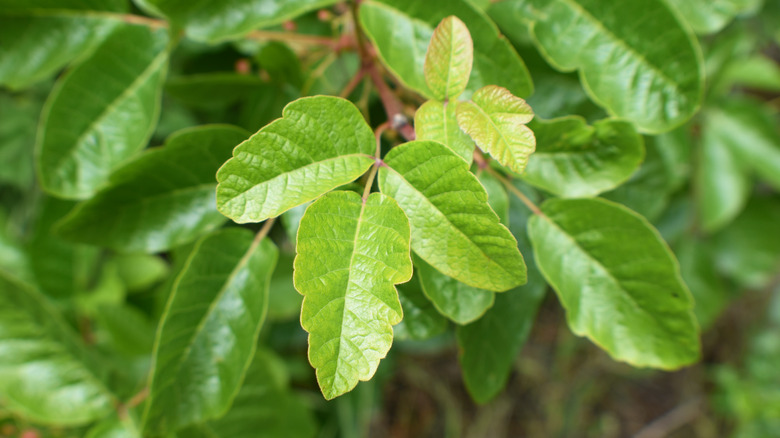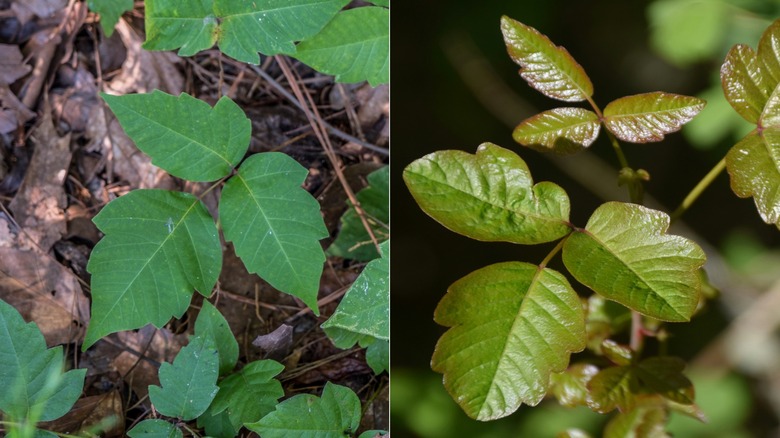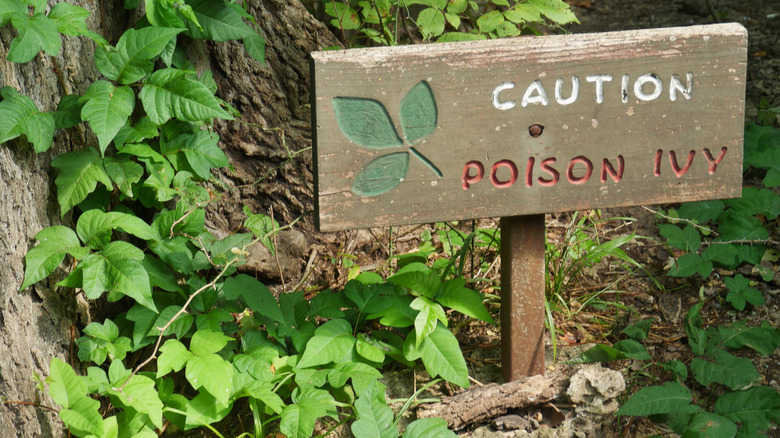How To Tell If You're Dealing With Poison Oak Or Poison Ivy In Your Garden
After putting in a lot of effort on your hands-and-knees trying to get rid of the weeds in your garden, there's nothing worse than finding yourself itching like crazy just 30 minutes later. But once you know that there's something poisonous in your garden, how do you identify which plant it is? How can you tell if you're dealing with poison oak or poison ivy? Both of these plants contain urushiol — an oily compound that causes a rash and an itchy reaction. Not everyone has an allergic reaction when they come in contact with these plants, but given that the majority of people do, it's important to know the differences in case you come across either of them in a forest, green space, or worse — your very own backyard.
The most common rule of thumb to avoid these plants is to follow the old adage, "leaves of three, leave them be." Here are the specifics of where these plants commonly grow, and the safest way to identify them before removing them from your garden.
The visual differences between poison oak and poison ivy
Poison ivy has three leaflets per each leaf, with the longest leaflet being the one in the center, and it has pointed edges. Where you are located may affect where you'll find poison ivy outside; eastern poison ivy can grow in the ground but can also climb up a rope-like vine with leaves that turn yellow or red in the fall. Western poison ivy grows like a low shrub or a bush, sticks close to the floor, and does not climb like a vine. Some types of poison ivy have yellow or green flowers growing beside them, or small berries colored white, green-yellow, or amber. When this pesky weed pops up in your yard, it's important to know what you're looking for.
Poison oak also has two different types commonly found in the United States: Pacific poison oak and Atlantic poison oak. Pacific grows across the western United States, particularly California, where the plant can be found in grasslands and forests and typically stands about 3 feet tall. Atlantic grows in southeastern states and is found in open woodlands and sandy thickets. The leaves also have three leaflets, but the edges are curved and can grow flowers and berries in clusters close to the leaf. Poison oak will become yellow with brown undertones in the fall. These leaflets may also have a coating of fine hair.
Safety precautions to keep in mind when identifying these plants in your own garden
Given that a high percentage of people experience allergic reactions to poison ivy and oak, it is important to properly protect your skin when approaching the bush. Experts say to wear protective clothing and shoes like long sleeves, long pants, gloves, and boots. Rubber gloves work best compared to cotton materials because the oils will not remain on the fabric. Protecting your eyes with goggles is also wise. If your clothes come in contact with the plant, remove them carefully and wash them immediately with hot water separate from your other laundry.
If your pet was exposed, be sure to wash their fur with rubber gloves and a pet-friendly soap, then rinse with cold water. A visit to the veterinary office is also a worthwhile precautionary measure. Any tools that have been exposed should also be washed with detergent. Although burning might seem like a simple solution to get rid of this plant without having to touch it, don't — the gases from the urushiol spread in the air when burned. Instead, you'll want to follow the top practices for the best ways to kill poison ivy and the best ways to kill poison oak before eliminating these plants from your space.


